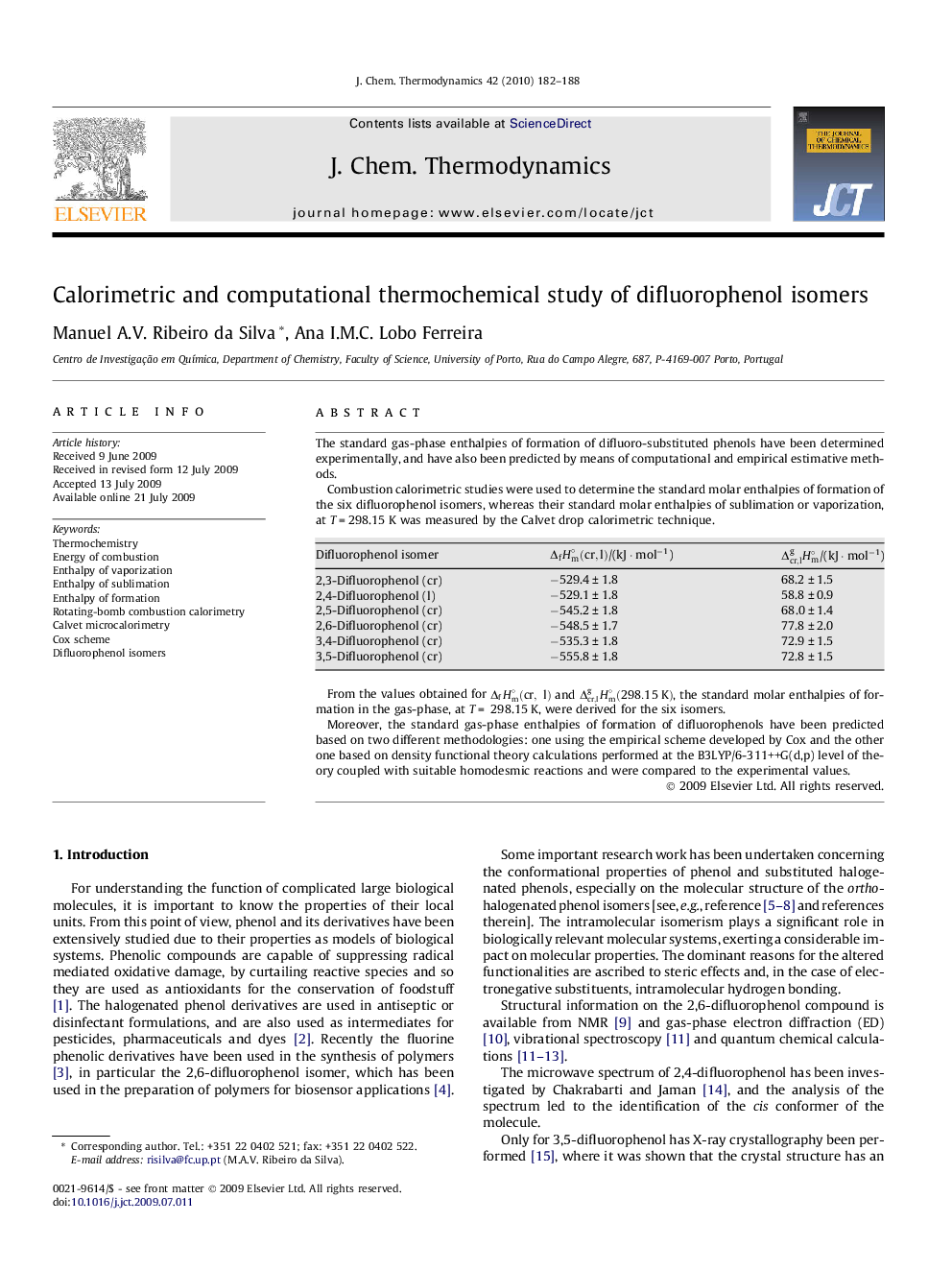| Article ID | Journal | Published Year | Pages | File Type |
|---|---|---|---|---|
| 216507 | The Journal of Chemical Thermodynamics | 2010 | 7 Pages |
The standard gas-phase enthalpies of formation of difluoro-substituted phenols have been determined experimentally, and have also been predicted by means of computational and empirical estimative methods.Combustion calorimetric studies were used to determine the standard molar enthalpies of formation of the six difluorophenol isomers, whereas their standard molar enthalpies of sublimation or vaporization, at T = 298.15 K was measured by the Calvet drop calorimetric technique.Difluorophenol isomerΔfHm∘(cr,l)/(kJ · mol−1)Δcr,lgHm∘/(kJ · mol−1)2,3-Difluorophenol (cr)−529.4±1.868.2±1.52,4-Difluorophenol (l)−529.1±1.858.8±0.92,5-Difluorophenol (cr)−545.2±1.868.0±1.42,6-Difluorophenol (cr)−548.5±1.777.8±2.03,4-Difluorophenol (cr)−535.3±1.872.9±1.53,5-Difluorophenol (cr)−555.8±1.872.8±1.5Full-size tableTable optionsView in workspaceDownload as CSVFrom the values obtained for ΔfHm∘(cr, l) and Δcr,lgHm∘(298.15K), the standard molar enthalpies of formation in the gas-phase, at T = 298.15 K, were derived for the six isomers.Moreover, the standard gas-phase enthalpies of formation of difluorophenols have been predicted based on two different methodologies: one using the empirical scheme developed by Cox and the other one based on density functional theory calculations performed at the B3LYP/6-311++G(d,p) level of theory coupled with suitable homodesmic reactions and were compared to the experimental values.
